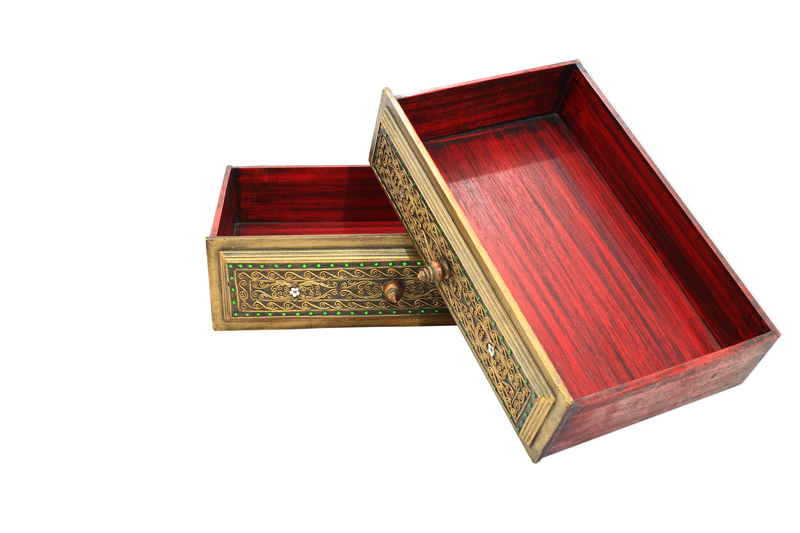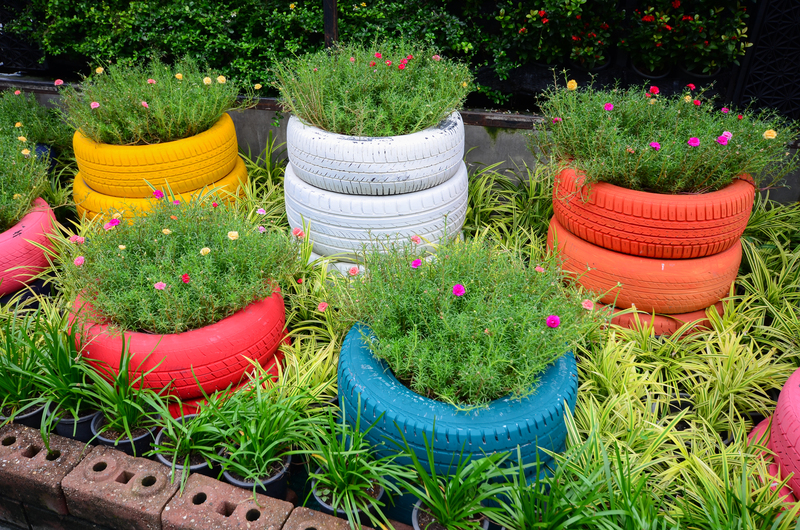Essential Steps to a Neat and Organized Office
A well-organized office is the heart of productivity, a source of daily inspiration, and a factor that contributes to reduced stress and improved professional image. Whether you work from home or in a shared office space, maintaining an orderly environment is not only crucial for workflow efficiency, but it also reflects your commitment to professionalism. In this comprehensive guide, we outline the essential steps to a neat and organized office and provide actionable tips to create a workspace that encourages focus and creativity.

Why Office Organization Matters
Cluttered workspaces lead to distracted minds. Research consistently shows that physical clutter in your workspace can affect your ability to concentrate and process information. It's not just about aesthetics; organizing your office offers concrete benefits:
- Boosts Productivity: An orderly office minimizes distractions and makes it easy to locate what you need.
- Reduces Stress: A clutter-free environment promotes a sense of calm and control.
- Enhances Professionalism: A tidy office makes a strong impression on clients and colleagues alike.
- Improves Time Management: When everything has a place, you save precious minutes normally lost searching for supplies or documents.
- Promotes Creativity: A neat workspace can stimulate creativity and provide the mental space to think innovatively.
Let's explore the crucial steps for a well-organized office and how you can transform your workspace starting today.
Step 1: Assess and Plan Your Workspace
Before diving into organizing, _evaluate the current state of your office_. Look around and ask yourself:
- What items do I use daily, weekly, or rarely?
- Which areas attract the most clutter?
- Is my office layout functional and ergonomic?
Once you've assessed, draw up a plan for reorganization. Planning ensures you stay on track and set realistic goals for every part of your workspace.
Tips for Planning a Productive Office Layout
- Prioritize functionality: Place frequently used items within easy reach.
- Designate work zones: Set aside areas for computer work, paperwork, and supplies.
- Consider ergonomics: Invest in a comfortable chair and position your monitor at eye level.
Step 2: Declutter Relentlessly
One of the key steps to an organized workspace is decluttering. It's easy for offices to become dumping grounds for unused papers, outdated equipment, and random odds-and-ends.
How to Effectively Declutter Your Office
- Empty all drawers, shelves, and surfaces.
- Sort items into three categories: Keep, Donate/Recycle, and Trash.
- Disposal: Responsibly discard or recycle anything that no longer serves a purpose.
- Paper clutter: Digitize documents or file only what's necessary; shred outdated confidential papers.
Embrace a minimalist mindset. If you haven't used an item in months, seriously consider whether you need to keep it. Streamlining your office belongings is essential for a consistently tidy workspace.
Step 3: Optimize Storage Solutions
Once you've pared down, it's time to store smartly. Having effective storage options is a critical step to an orderly office.
Smart Storage Ideas for an Office
- Vertical shelving: Utilize wall-mounted shelves to store books, files, and boxes.
- Drawer organizers: Separate pens, clips, and office supplies into compartments to prevent chaos.
- Labeled containers: Use clear bins with labels for supplies or paperwork.
- File systems: Invest in sturdy file cabinets or desktop file organizers for quick retrieval.
- Hidden storage: Use under-desk drawers or rolling carts to maximize unused space.
Every item should have a specific home, making cleanup simpler and future clutter less likely.
Step 4: Create Efficient Work Zones
A strategic office layout improves workflow and minimizes distractions. Neat offices often feature distinct working areas designed for specific tasks.
How to Set Up Work Zones
- Main Work Area: The primary spot for your computer, phone, and everyday essentials. Keep this area clear except for necessary equipment.
- Reference Zone: Shelves or cabinets for manuals, binders, and frequently referenced materials.
- Storage Zone: Designated area for supplies, personal items, and backup materials.
- Creative or Collaboration Corner: Space for brainstorming, meeting with colleagues, or spreading out large projects.
Clearly defining zones prevents miscellaneous items from drifting onto your main workspace and helps maintain order throughout the room.
Step 5: Maintain a Tidy Desk Policy
Your desk is often the focal point of your office. A cluttered desk can lower efficiency and motivation. Setting a few desk rules will help keep surfaces clear and inviting.
Rules for a Neat Desk
- Only keep out what you need: At the end of each day, put away pens, papers, and gadgets.
- Use trays or organizers: Store incoming and outgoing paperwork in separate trays.
- Limit personal items: Keep decor simple - a photo frame, small plant, or inspiring quote.
- Wipe down surfaces: Clean your desk regularly to keep dust and germs at bay.
Your desktop should inspire focus, not serve as a landing pad for paperwork or random clutter.
Step 6: Implement a Digital Organization System
In our technology-driven world, digital clutter can be as overwhelming as physical mess. Organizing your computer and files is essential for a streamlined office.
Best Practices for Digital Organization
- Clear your desktop: Store only active project files on your desktop and regularly archive what you're finished with.
- Use cloud storage: Platforms like Google Drive or Dropbox make file access convenient and prevent file loss.
- Consistent naming: Name folders and files in a clear, logical sequence so you can locate documents quickly.
- Regular backups: Schedule automatic backups to protect your work from technical mishaps.
Remember, an organized office extends beyond physical space to the digital realm for true productivity benefits.
Step 7: Personalize with Purpose
While neatness is key, an impersonal office can lack motivation. Add personality in a controlled way to make your workspace welcoming but not overwhelming.
Ideas for Thoughtful Personalization
- Art or photographs: Display pieces that bring you joy or have personal meaning.
- Inspiring quotes: Motivate yourself with framed or written quotes on sticky notes.
- Plants: Add small, easy-to-care-for greenery to boost focus and purify the air.
- Color accents: Incorporate your favorite colors through accessories, but avoid visual overload.
Your office should reflect both professionalism and some aspects of your personal style for a balanced environment.
Step 8: Establish Regular Cleaning and Organization Routines
Maintaining a neat and organized office is an ongoing process. Create habits that ensure your workspace remains tidy and efficient.
Daily and Weekly Office Organization Habits
- End-of-day reset: Take 5 minutes before leaving to tidy your desk and put away supplies.
- Weekly review: Check for items that have drifted from their homes and return them.
- Monthly deep clean: Dust surfaces, wipe down electronics, and clear out outdated files/documents.
- Quarterly overhaul: Review office layout and storage to optimize as your needs change.
Consistency is key; regular routines prevent clutter from re-accumulating.
Step 9: Upgrade Office Organization Supplies
The right supplies can transform your organizing efforts. Invest in quality office organization tools for lasting neatness.
Must-Have Office Organization Tools
- Adjustable shelving units for flexible storage.
- Magnetic boards or cork boards for quick reminders and notes.
- Multi-compartment supply caddies to contain small items.
- Label makers for clear identification on files and boxes.
- Monitor risers to create extra workspace beneath screens.
Upgrade as your office evolves - don't hesitate to try new solutions that fit your workflow.

Step 10: Encourage an Organized Office Culture
For shared offices, maintaining order is a team effort. Promote a culture of organization among colleagues for collective success.
How to Foster Office-Wide Organization
- Set clear expectations for shared spaces such as printers, meeting rooms, and supply closets.
- Rotate cleaning/organizing duties among team members.
- Offer incentives for the tidiest department or desk.
- Host decluttering days for communal invitations to organize together.
Organization thrives when everyone contributes to maintaining standards and encouraging accountability.
Final Thoughts on Creating an Organized Office
A neat and organized office isn't just a visually pleasing space - it's a powerful tool for boosting morale, efficiency, and mental clarity. By following these essential steps to a tidy office, you'll foster a positive environment where you can do your best work.
- Assess and plan your layout to maximize functionality.
- Declutter and remove unnecessary items.
- Optimize storage for quick, logical access.
- Create work zones to streamline tasks.
- Adopt desk and digital organization habits for sustained order.
- Personalize with intention for a boost of motivation.
- Establish cleaning routines to keep order intact.
- Upgrade your tools as needed for greater efficiency.
- Promote a culture of organization throughout your workspace.
If you find yourself overwhelmed, start small. Organize one drawer or shelf at a time, and gradually work your way around the office. The benefits of a meticulously organized workspace will soon become obvious - increased productivity, reduced stress, and a healthier, happier workday. Prioritize these office organizing steps, and transform your daily routine for the better.
Ready to take action? Begin with a simple change today and continue refining your space until your office becomes an inspiring model of order and productivity.